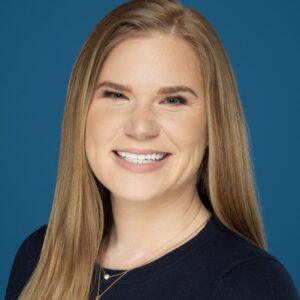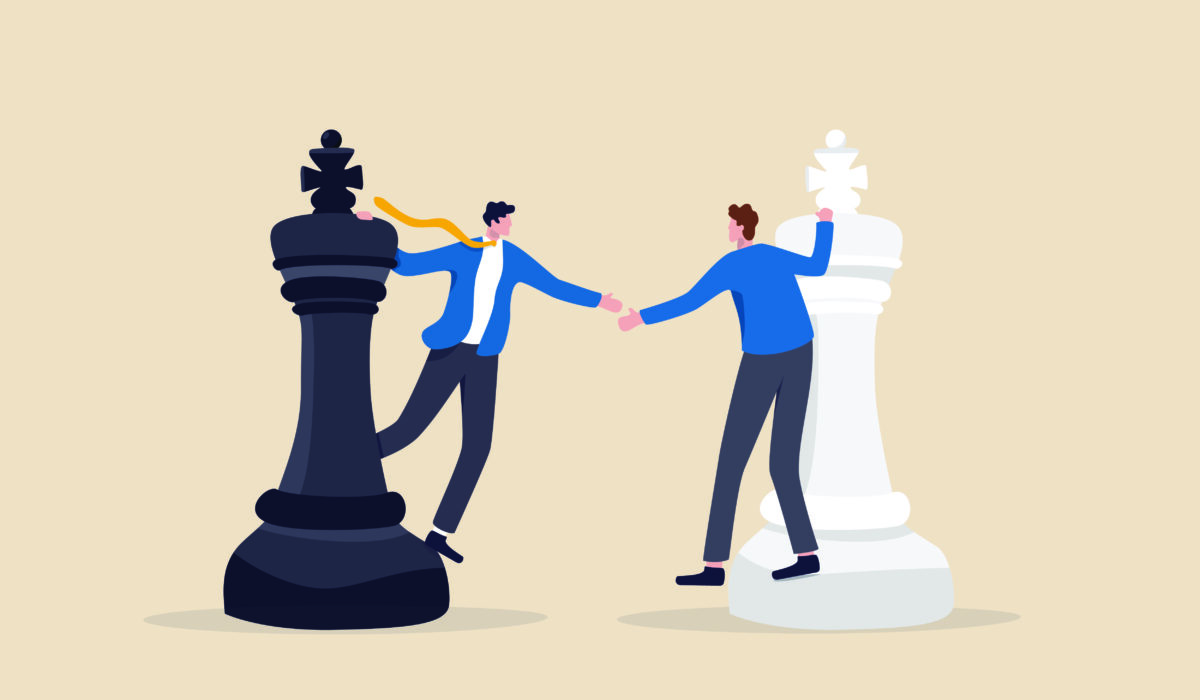Starting as a teen, Bryan Clayton built his Nashville lawn-mowing operation into a 150-person landscaping business with $7 million in annual revenue. But when he wanted to sell Peach Tree Landscapes, he discovered he had a problem: The business didn’t appear profitable enough to fetch the price he wanted.
Clayton attracted a serious buyer, competitor Landscapes USA, but the offer was too low. It took a painfully long, two-year negotiation process to close the deal.
“I was absolutely scarred from going through this,” Clayton said.
The problem that kept the two sides from finding easy agreement lay in a key figure known as SDE, or seller’s discretionary earnings.
What is SDE?
What does SDE stand for? It’s an acronym for seller’s discretionary earnings.
Also known as the “owner’s benefit” or “seller’s cash flow,” SDE is the total net income a business owner makes from their company in a year — generally speaking, it’s another way to calculate profit. It’s an important figure when you sell your business because it’s often used to come up with a business valuation, since this is the amount of money the new owner can expect to take home from the business.
What is discretionary income? It’s called “discretionary” because it’s uncommitted cash that can be spent as the owner wishes.
Use our quick valuation tool to get a sense of how much you could sell for. It’s free.How much is your business worth?
How is SDE calculated?
This acronym can trip up founders who are selling a business for the first time, so here’s how to calculate SDE.
You take all business revenue and subtract all business expenses. The difference is SDE. If there are personal expenses you’ve categorized as business expenses — which is common in small business — those personal expenditures are removed from the expense line and added to the net-profit figure, increasing SDE.
“In a nutshell, SDE is your net profit plus owner benefits,” said Ryan Condie, an M&A advisor at Quiet Light brokerage who specializes in selling online businesses.
Or, as his colleague at Quiet Light David Newell explained: SDE is “your earnings plus your personal drawings, travel expenses — discretionary things, basically — to give the real sort of underlying earnings of the business.”
To break it down, SDE may include the cost of the owner’s:
- Salary
- Bonuses
- Company benefits such as healthcare premiums
- Company perks such as a free gym membership
- Travel costs
- Company car
- Personal cell-phone plan
As you can see, seller’s discretionary earnings may include many expenses that a new owner might choose to allocate differently. If the new owner isn’t going to work in the business, they could cut many of these expenses.
Often, business owners write off personal expenses in part to show a lower net income and pay less taxes. But you’ll likely want to rework your financial documents when you’re selling your business, to showcase SDE instead. (You can still use your tax-optimized financial records when you file your taxes.).
If there are one-time business expenses such as building an addition to the office, those costs may be considered add-backs – expenses that get added back into SDE, as though they weren’t spent, since they were optional projects that are unlikely to happen again.
Most small business owners need support in calculating SDE. Ask your accounting team and/or M&A advisor to help you figure out which add-backs a buyer will see as legitimate.
SDE vs. EBITDA: What’s the difference?
It can be confusing when to use SDE versus EBITDA (Earnings Before Interest, Taxes, Depreciation, and Amortization).
Here are the key differences.
SDE:
- Best for: Businesses under $5 million revenue
- Includes owner benefits
- Add-backs: Personal expenses, one-time costs
EBITDA:
- Best for: Businesses over $5 million revenue (and sometimes smaller businesses as well)
- Does not include owner benefits
- Add-backs: One-time costs only
SDE assumes the owner has been working in the business, and the new owner might take that route as well. EBITDA assumes the owner has professional management and focuses purely on operational earnings.
For many small business sales, SDE is the more relevant metric because it shows the true cash flow benefit a new owner-operator can expect.
Do you have enough SDE?
Condie notes that if annual SDE totals $200,000 or less, it can be hard to find a buyer. That’s because many buyers want to find a general manager or business operator to run the business once the founder exits — and that will usually cost $120,000 or more.
“It’s not quite big enough to replace that owner with a really competent operator and still have a lot of wiggle room for profit left,” he observed. “It makes it quite tricky to exit.”
While some buyers might want to essentially buy themselves a job that offers some profit potential, many buyers aren’t looking to work actively in businesses they acquire. So, low SDE limits the types of buyers that will be interested in your business, Condie said.
He also noted that if you have more than one owner working in the business full time, you can only include one 40-hour owner’s salary in SDE. A buyer could decide to be an owner/operator to save one owner’s salary cost, Condie pointed out, but they can’t do two full-time jobs at once. So the other owner’s role will need to be filled by a new hire and their salary cost will continue.
Why SDE for business sale valuations
Seller’s discretionary earnings are important because they’re sometimes used to calculate your business’s valuation. Buyers may be willing to pay a multiple of SDE that varies depending on your industry and business type. For instance, recurring-revenue businesses tend to command higher multiples.
Not all valuations are based on multiples of SDE; sometimes businesses are valued based on multiples of revenue instead. For example, SaaS (Software as a Service) companies with less than $1 million in revenue are commonly valued based on a multiple of SDE, Newell said, but once the business exceeds that $1 million revenue mark, they’re typically valued based on a revenue multiple instead.
In the case of Clayton’s landscaping business, the norm when he sold in 2013 was 6x SDE. His problem was that his initial figures only showed $500,000 in annual SDE, a figure too low to justify his desired sale price (which remains undisclosed). He sought to add enough profit to Peach Tree’s SDE that he could increase his asking price by $1 million.
It would take a two-pronged approach to achieve his goal.
Ways to improve SDE — and the value of your business
There are two basic ways a seller can increase their SDE: grow top-line revenue and reduce expenses. After seeing his expenses through his buyer’s eyes, Clayton attacked his low-SDE problem from both directions.
On the expense side, Clayton had been living large on the company dime. He drove a company-owned Cadillac Escalade, stayed in top-flight hotels, dined at the finest restaurants, and flew first class — he even had the business cover his cell phone family plan that included his mom’s phone. He was able to convince his buyer that many of these expenses would be reduced under new ownership.
“These were lifestyle choices I made, but could add back in,” he said. “An operations manager is going to drive a pickup, and they’re not going to put him in a first-class hotel and fly him first class.”
There was one other big company expense that Clayton decided to cut to boost SDE, but it was a difficult choice. After an advisor told him the mark of legitimacy in landscaping is owning property, Clayton invested $700,000 over the years buying and fixing up a commercial building outside Nashville to use as company headquarters. It became a classy oasis Clayton looked forward to working at, with a sleek look that reminded him of a Ferrari dealership.
“It was the Taj Mahal of my world,” he said. But he gradually realized a new owner wouldn’t care about owning a Taj Mahal — just about maximizing profits.
Over time, the building’s value grew to $3 million. By selling the building, adding the profits to the company’s assets, and leasing a gritty warehouse in town instead, Clayton eliminated building-ownership expenses and improved his team’s productivity. New-client meetings that were a 45-minute commute from his fancy HQ now took five minutes.
Selling the commercial building also turned out to be key to improving the other side of Clayton’s SDE equation: income. He quickly discovered that operating from a Nashville-city address instead of one in an outlying suburb meant his firm won substantially more contracts, as customers wanted to work with local vendors. The sales team went from winning one of 10 6-figure contracts they bid on to winning two or three, increasing income 20% and adding to profits.
“It was not the type of place I was proud to drive to and sit at for 12 hours,” he said of the rented warehouse, “but after a month I thought, ‘Why didn’t I do this long ago?’”
$1M more with higher SDE
In all, Clayton was able to improve Peach Tree’s SDE by over $150,000, with $100,000 of that coming from lifestyle add-backs. With his industry’s typical valuation multiple of 6x SDE, that change ended up adding $1 million to his asking price. He sold Peach Tree in 2013, and has since founded a referral app for landscaping services, Your Green Pal.
This time, he said, he’s built the business from the start with a sharp eye on SDE and how the business will look to a buyer at some future point.
“If I had to do it all over again,” he said of the Peach Tree sale, “I’d put a stronger emphasis on SDE. It’s a tangible, straightforward way to express the value of your business to potential buyers.”
This post contains an affiliate link from one of our partners, Quiet Light brokerage. If you engage them through our link, The Got Acquired may receive a commission (at no extra cost to you).




